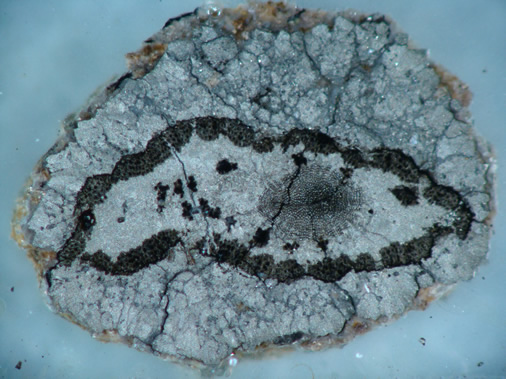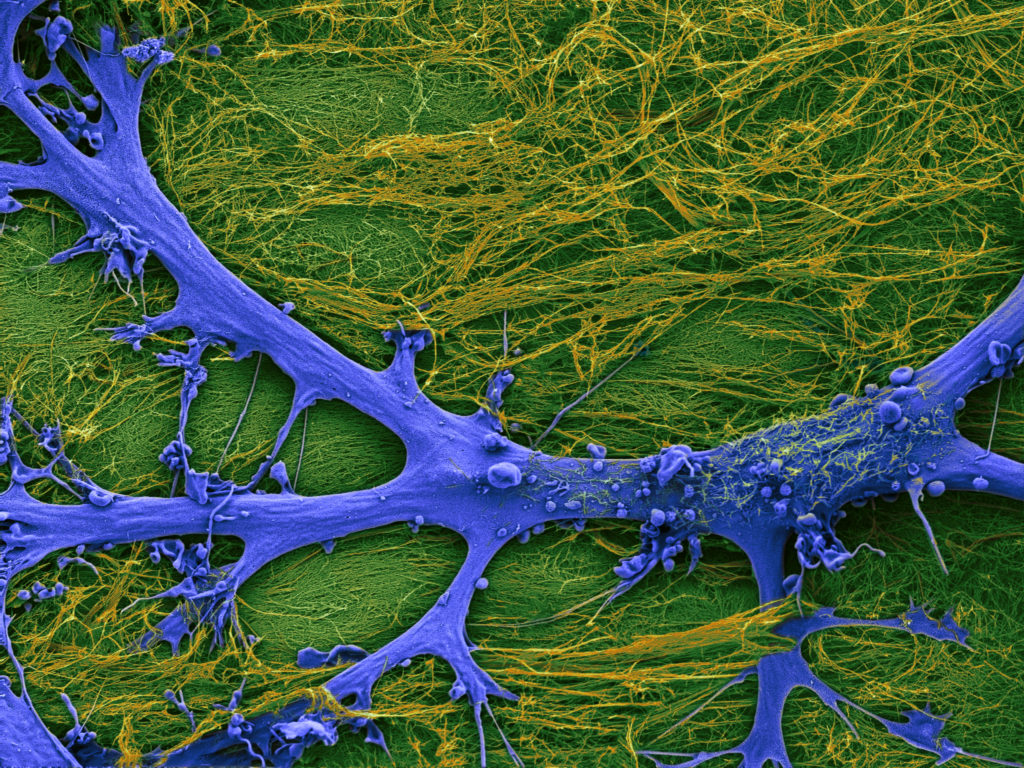[Story by Margarite Nathe, Endeavors magazine]

Say you’ve been scooped up and tossed four hundred million years back in time, back when the planet’s landmasses are still huddled together and the deep, colossal ocean Panthalassa covers most of the globe. The Earth you’ve landed on is laboring through its Devonian Period, a stretch of history famous for its huge armored fishes, wandering tectonic plates, and plummeting levels of carbon dioxide. You’re probably uncomfortably warm and the air probably stinks of iron sulfide.
Once you dust yourself off and take a look around, you’ll see a swampy landscape and horizon jagged with volcanoes. There’s some vegetation near the water’s edge, but no trees or forests. The tallest plants in the world are only a few feet high and they have no leaves and no roots — basically, they’re primitive, fleshy shoots that suck water from the mud directly beneath them.
Now look down, close to your feet. See that little plant that looks like a bunch of green spines sprouting out of the ground? Its stems are made up of what might be the very first traces of wood on Earth. And the next person to lay eyes on them, after you, will be UNC biologist Patricia Gensel.
In the mid-1990s, Gensel and her husband checked in to a summer cottage on the Restigouche River in New Brunswick, Canada. They’d been going there for years, armed with picks and shovels and geological hammers, and sometimes with a few students to help them dig. Together they would venture out to the shore to look for plant fossils.
“It’s not light work,” Gensel says. Summers there are hot, and once the couple found a place near the shore to dig, they had to crack through the top layer of rock and lug the pieces aside. Then they would switch to crowbars. Hours later, if they were lucky, they were prying bits of fossilized plants out of the ground.
On this particular day, they were trying a new, little-known spot that some locals had pointed out to them. It didn’t look too promising at first — a layer of small-pebble conglomerate doesn’t usually make for well-preserved plant fossils, Gensel says. But once they dug through that, they found an obliging layer of undisturbed, finer-grain sediment. It was full of fossils. Some of them, she saw, blazed with an orange tinge. Bingo.
The color was a sign that the rocks were hiding pyrite, a mineral that turns to orange iron oxide when it starts to break down. And where there’s pyrite, there are well-preserved fossils.
To create the seal that will protect a plant over time, Gensel says, conditions have to have been just right back when the plant was buried. A certain pH and a lack of oxygen would help the cell walls of a decaying plant attract ions of some kind of mineral — usually silica, calcium carbonate, or pyrite. The cells would then fill with crystals, which can preserve the anatomy of the plant for hundreds of millions of years.
Gensel was excited. Intact plant anatomy doesn’t come along every day. So they collected for hours and packed up the rocks to be sent back to her lab at UNC.
Eventually all the fossils were unpacked, sawed into sections, polished, mounted on slides, sealed in resin, and ready to be studied. When Gensel finally saw the ancient cell structures under her microscope, she was flabbergasted. Rows and rows of rigid, rectangular cells radiated outward from the center of the stem. She could almost have been looking at a cross-section of a modern-day pine sapling. But according to the spores present in the rock, her fossils were clearly four hundred million years old — a good ten million years older than the first plants scientists thought had developed woody structures.
The more Gensel studied the world’s oldest wood samples, the more convinced she became that scientists’ main theory about why plants made the adaptation is wrong. It wasn’t for strength, she says. It was for plumbing.
For the past hundred years, scientists have said that plants probably began to develop wood for structural support, to help them grow taller and stronger. “But these early plants were tiny,” Gensel says. “In trees, secondary tissue and wood help provide additional support, but these little plants didn’t need that. I think some of these changes in anatomy are related more to water use, or hydraulic conduction, than to support.”
Plants were having a hard time staying hydrated enough to photosynthesize during the Devonian Period, mainly because carbon dioxide levels were plummeting. “The problem is that when the CO2 levels drop, plants have to open their stomates longer to take up CO2 for photosynthesis,” Gensel says. (Stomates are pores on the surface of leaves and stems that allow for gas exchange in plants.) “And every time they open their stomates to take in CO2, they lose water, because they’re more hydrated inside than out.” Plants needed more and better water conduction, and the elongated cells called tracheids that Gensel found in her fossils do just that.
Some researchers say that temperatures in the Devonian were dropping along with carbon dioxide levels, stirring up glacial activity and periods of climatic waffling. We don’t know all the specifics, but we know that things were getting rough for plants. They had to adapt. “That’s when most major plant structures evolved,” Gensel says. “By the end of the Devonian, we had forests, big trees, leaves, and even early seed plants. Most of the kinds of reproduction we know in plants today were present by the end of the Devonian Period.”
The fact that a woody structure gave plants more architectural support may have been just a happy accident. But all the changes together allowed Earth’s flora to reach soaring heights, expand away from the shorelines, and spread inland to cover the planet.
While that was happening, the Devonian Period was coming to an end. It wasn’t pretty, especially for the water-dwellers. Some unknown catastrophe triggered mass extinctions for various brachiopods, trilobites, jawless fish, and other reef-builders swimming in Panthalassa’s waters, and brought the Age of the Fishes to an abrupt close. The organisms living topside, though, were just getting started.



